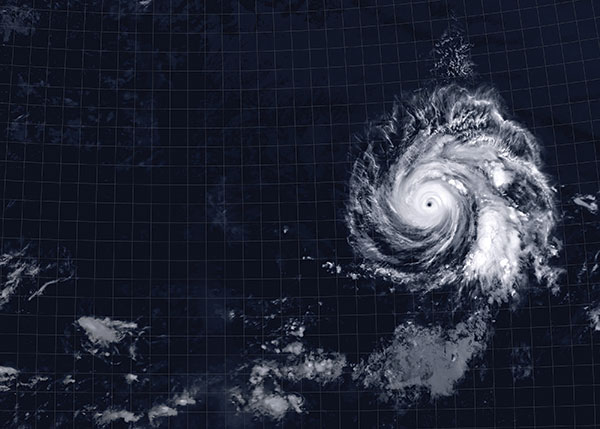Here we go again — hurricane season kicks off June 1, and the severe storm threat doesn’t let up until Nov. 30.
Experts are predicting a near-normal season this year, with the forecast from The National Oceanic and Atmospheric Administration forecasting a range of 12 to 17 named storms. Of those, five to nine could become hurricanes (winds of 74 mph or higher), according to NOAA, including one to four major hurricanes (category 3, 4 or 5; with winds of 111 mph or greater).
As we know all too well, the damage can be catastrophic. For instance, Hurricane Zeta, a Category 3 storm, caused $4.4 billion in damage when it blew ashore in October of 2020 — including $90 million in Mississippi alone.
Hurricanes can be unpredictable, but as during any storm season, you can take precautions to protect yourself, your loved ones and your property.
Here are some steps that can help you and your family weather the storm:
START WITH A SAFETY PLAN
If you go: Don’t wait until the hurricane is at your doorstep to plan how to leave safely. Map out an evacuation route that takes you at least 20-50 miles inland. Talk this plan over with your family, friends and anyone else who is affected so everyone knows what to do, where to go and where you will stay if a natural disaster strikes. Before you go, unplug appliances, turn off the electricity and the main water valve and make sure you have emergency supplies; warm, protective clothing; cash and credit cards and copies of important documents such as insurance paperwork and a household inventory.
If you stay: Be ready to be without power, water, gas and phone and internet service for a while. Find a place in your home where you’ll be safe from dangerous winds; the best option is a small, interior, windowless room on the lowest level that is not likely to flood. If flooding is likely, designate a place to escape to on higher ground.
Whether you go or stay, make sure to fill up your gas tank.
STOCK UP ON SUPPLIES
Do you have a survival kit packed? According to the American Red Cross, here’s what your kit should contain, at a minimum:
- Water: one gallon per person, per day (three-day supply for evacuation, two-week supply for home)
- Food: non-perishable, easy-to-prepare items (three-day supply for evacuation, two-week supply for home)
- Flashlight
- Battery-powered or hand-crank radio (NOAA weather radio, if possible)
- Extra batteries
- Deluxe family first aid kit
- Medications (seven-day supply) and medical items
- Multi-purpose tool
- Sanitation and personal hygiene items
- Copies of personal documents (medication list and pertinent medical information, proof of address, deed/lease to home, passports, birth certificates, insurance policies), stored in a waterproof bag
- Cell phone with chargers
- Family and emergency contact information
- Extra cash
- Emergency blanket
- Area map(s)
DON’T FORGET YOUR FURRY FRIENDS
If you have pets, make sure they are wearing a collar with identification, your contact information and a current rabies tag. Plus, you’ll want to add the following to your disaster kit:
- Trash bags
- Copies of important documents from your veterinarian
- A crate/pet carrier
- Cleaning products
- A leash
- Pet food
Make arrangements for your pets if you evacuate, as they are not allowed in most shelters.
PREP YOUR PROPERTY
- Do you have any loose items, like outdoor furniture, hanging signs, flags, etc. in your backyard or on your porch? Bring them inside or otherwise secure them prior to a storm.
- If you don’t have hurricane shutters, board up your windows with fitted plywood to reduce the danger of flying glass.
- Inspect your roof for any areas that may need to be repaired or replaced. Use straps or additional clips to securely fasten your roof.
- Clean your gutters, removing debris to allow rain to flow through freely.
- Trim your trees, ensuring that limbs and branches won’t land on your home or a utility line.
- Ensure doors and windows are sealed properly.
MAKE SURE YOU’RE COVERED
- Check your insurance policy to ensure you know your deductible and have sufficient coverage. Bear in mind that a standard homeowner’s policy does not cover flood damage.
- Inventory your belongings, particularly valuable items like jewelry, furniture, electronics, etc., and take photos.
BE READY FOR POWER OUTAGES
Your area may be without power for several days, so make sure you do the following before the storm hits:
- Fully charge your phone and any other electronic devices you will need, as well as your portable charger if you have one.
- Provide a flashlight to each member of your household, and have plenty of batteries.
- Have some cash on hand.
- If you have medical devices powered by electricity, plan for how you will use them in an outage. If you have medications that must be refrigerated, devise an alternate way to keep them cold.
Above all, pay attention to directives from local and regional authorities, the National Weather Service and others. With some extra vigilance and planning, hurricane season won’t catch you unprepared.


